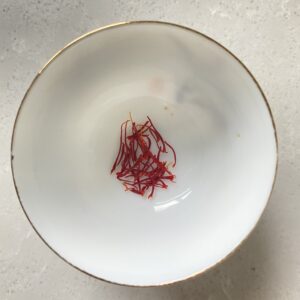saffron
the price of gold
This exquisite spice grown in the Bekaa Valley is a relatively new crop to Lebanon. The American University of Beirut, carried out research in 2003 in conjunction with ICARDA. Part of the project was to find a profitable crop for small rural communities in an area where employment and income are critical. The Bekaa is famous for its rich soil and agricultural produce, but as climate change affects farming, a crop which can survive the extreme heat and the lack of rainfall has been keenly adopted.
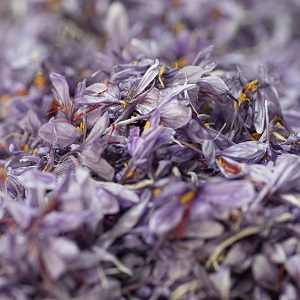
However, with the economic collapse in Lebanon, farmers are not reaping such profitable rewards from saffron or the other cash rich crop hashish, which is grown in the area. Lebanese journalist Abby Sewell illustrates these difficult choices in an article in L’Orient Today.We hope that buying their saffron will encourage farmers to continue growing saffron, rather than resorting to other cash rich crops.
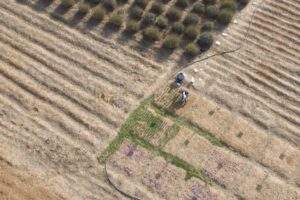
According to Caz Hidebrand, in her book The Grammar of Spice, it takes around 150,000 flowers to produce one kilogram of saffron. This represents hours of work. Work which has changed little over time. This 17th century BC fresco from Santorini show women picking saffron flowers in much the same way as happens now. This is why these little pots of saffron are the price of gold.
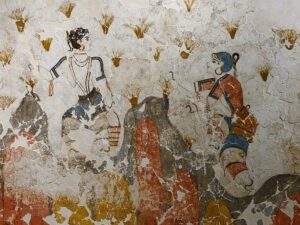
a giving plant
Luckily saffron grows well in the terrain of the Bekaa. Once planted, the corms reproduce and these bulbs can be passed on to other farmers to start up their own project. The initial corm is the “mother” bulb, and produces “daughter” bulbs, which take over once the bulb dies, to produce more saffron the following year.
harvesting by hand
Throughout the year, Bedouin women weed the field by hand, removing rocks, so that the flower of the crocus sativus can push up through the rain-fed red clay soil in the late autumn. In late November there is a 48 hour window for harvesting to take place. Work begins early in the day, before the sun damages the petals. It is back breaking work. Careful hands collect the flowers, then later pinch out the three stigmas before the drying process, which intensifies the colour, can begin. This all has to be done on the same day.
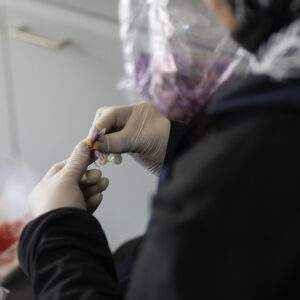
another Phoenician gift
As well as shipping olive oil from the eastern Mediterranean, the Phoenicians brought saffron to England. In exchange for tin, saffron arrived in Cornwall according to Patience Gray, in her book “Honey From A Weed”. So it seems only appropriate that we are now importing saffron to the UK saffron from the land of the Phoenicians.
saffron harvesting in the Bekaa
health benefits
These curly threads of deep red are also famed for their health benefits. Research shows that the active compounds in saffron, such as carotenoid – which accounts for its colour – could help with depression, anxiety and pre-menstrual syndrome.
